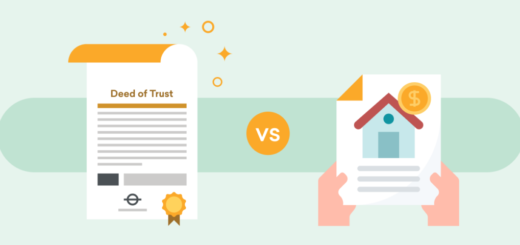Underwater Mortgage: What Is It and What Are usually Your Options?
Our goal is to give you the tools and confidence you should improve your finances. Although we all receive compensation from our partner lenders, whom we will continually identify, all opinions are our own. Credible Operations, Incorporation. NMLS # 1681276, is usually referred to here as “Credible. ”
Your home can be your biggest asset as well as a primary tool for building wealth over the long term. Yet like other assets a person invest in, such as stocks plus bonds, the value fluctuates. These fluctuations can put you underwater with your mortgage.
Here’s what you should know about underwater mortgages and exactly what you can do if you have one:
What is an underwater home loan?
An underwater mortgage, also known as an upside-down mortgage or having negative home equity , is a home buy loan with a principal balance that exceeds the value of the house — in other words, you owe the lending company more than your home is worth.
Underwater mortgages were common during the Great Recession from 2007 to 2009, when home values through the entire country plummeted and carried on to decline for several years after the recession’s end. Homeowners with purchase or refinance loans based on pre-crash home beliefs found themselves underwater because of this.
Underwater mortgages are less common today because of tighter underwriting criteria and record price boosts since the pandemic. Median house prices increased nearly 25% from June 2020 to June 2021, so there’s a good chance that your home is worth more now than when you bought it.
Signs of an underwater mortgage
Situations that might push a person into negative equity incorporate a decrease in local property ideals. A low appraisal is also a good indicator that you might end up being underwater on your mortgage.
Here’s how to find out if your loan is underwater.
Figure out how much you owe
You will find out how much you owe by checking your mortgage declaration. You’ll see the amount outlined under “principal balance” or even “outstanding principal”.
If you need to know the exact amount immediately, you’re best away from calling your loan servicer and asking for your payoff amount. That figure includes interest and fees which have accrued since the lender ready your statement.
Whether you’re researching prices or looking to buy a home, Reputable is here to help. You can evaluate prequalified rates on home loans from all of our partner loan companies in just a few minutes.
Determine your home’s value
The only way to get a precise opinion of value is to have your home appraised with a licensed home appraiser. An expert home appraisal is usually worth the cost if you’re hoping to market your home. Otherwise, you can get a sports event figure for free from a property portal site like Redfin or Realtor. com .
Subtract your home value from the principal balance
The final step is a simple mathematics problem that will show whether or not you’re underwater:
Value – Stability = Equity
If, for example , your house is worth $200, 000 and you also owe $225, 000 on the mortgage, the equation may be like this:
$200, 000 – $225, 000 = -$25, 1000
In this particular scenario, you’re $25, 000 underwater on your home loan.
Problems with underwater mortgages
An underwater mortgage doesn’t always have a negative impact on a homeowner. If your mortgage is affordable and you’re not really planning to sell or refinance, you might not worry about it in any way. However , when that’s false, an underwater mortgage may put you at a severe disadvantage.
Re-financing
Lenders safeguard themselves against default simply by limiting how much of your equity you can refinance. The limitation might be 80% for a cash-out refinance, for example , or 95% for a rate-and-term refinance. When you have negative equity, you might have nothing to draw towards.
Even in the event you find a loan that allows you to refinance 100% of your home’s value, the new loan won’t fully repay the underwater one. In that case, you’ll have to pay enough cash at concluding to make up the difference.
Furthermore See: The way to Refinance Your Mortgage in 6 Easy Steps
Offering
Most home mortgages have a due-on-sale clause that makes the loan due in full when the owner sells. In the case of an underwater mortgage, where the sale won’t cover the amount needed to pay off the mortgage, you’ll need enough money at closing to make up the difference.
Foreclosure
Your loan provider can’t foreclose simply because you’re underwater, but being underwater increases your risk associated with foreclosure because it limits your options. Since you might not be able to refinance or sell the home, there’s a greater chance of your home entering foreclosure if you can no longer keep up with the mortgage payments.
Underwater home loan options
You don’t necessarily have to take action when your mortgage is underwater, but it’s probably a good suggestion, even if only to ward off long term problems. If you’re already attempting, a quick response can keep you from losing your home.
Stay in your home
The simplest option would be to remain in your home and keep on making your regular home loan repayments. By paying down your principal balance, you’ll continue to construct equity. Consider making extra principal obligations to pay straight down your loan balance quicker.
You can also attempt to increase the value of your home. Home enhancement projects rarely generate a positive return on investment unless you can do the task yourself, but simple jobs that enhance curb appeal can give your home value a lift for little cost over and above elbow grease.
Refinance
Refinancing an underwater mortgage is complicated because you typically need collateral to do it. However , you might be in luck if your loan is definitely backed by Freddie Mac.
The Freddie Mac Improved Relief Refinance is meant for homeowners in whose mortgages are underwater. This method could make your loan cheaper by lowering your mortgage price and monthly payment or allow you to increase your equity faster having a shorter repayment period.
The program is available if you took out your home loan upon or after Oct. one, 2017, and are current with payments. Additional requirements consist of having had no 30-day delinquencies within the last six months and no several 30-day delinquency in the last yr. Fannie Mae has a comparable program but has paused it temporarily.
On the other hand, the VA no longer guarantees loan products where the loan-to-value ratio surpasses 100%. Some lenders do set a higher cap on streamline refinances, but the cover includes closing costs and funding fees that the loan provider rolls into the loan. These types of costs can put you even further into negative collateral.
Sell your home
You’ll have to meet one of two problems to sell a home with an underwater mortgage:
- Make up the difference between your loan balance and the sale price with a cash payment on closing
- Find permission from your lender in order to sell brief
Unless you’re struggling to generate payments, in which case you probably lack the funds to bring cash to closing, it doesn’t make sense to sell while your mortgage is underwater. But if you are struggling, a short selling can be an alternative to foreclosure.
Your lender won’t allow a short sale unless you document a hardship that is likely to keep you from making payments for the foreseeable future, such as a job loss or incapacity. It can also take months before your lender approves the short sale.
In the meantime, you might rack up sufficient late payments that a brief sale will do as much trouble for your credit as a home foreclosure would. And if the lender will approve the short sale, you might have to pay tax within the amount of the loan balance the lender forgives.
Walk away
Your own last resort is to basically walk away from your home and let the loan provider foreclose on it. This option is called a strategic default because you’ll have concluded that you’re unable to stay in the home and instead intend to use the money to pay off additional debt or build savings for rent.
Foreclosure will negatively effect your credit and remain on your credit report for seven many years. As such, you might find it difficult to rent a home. Paying quite a few or all of your rent upfront, though, gives you a better opportunity at having your rental software approved.




